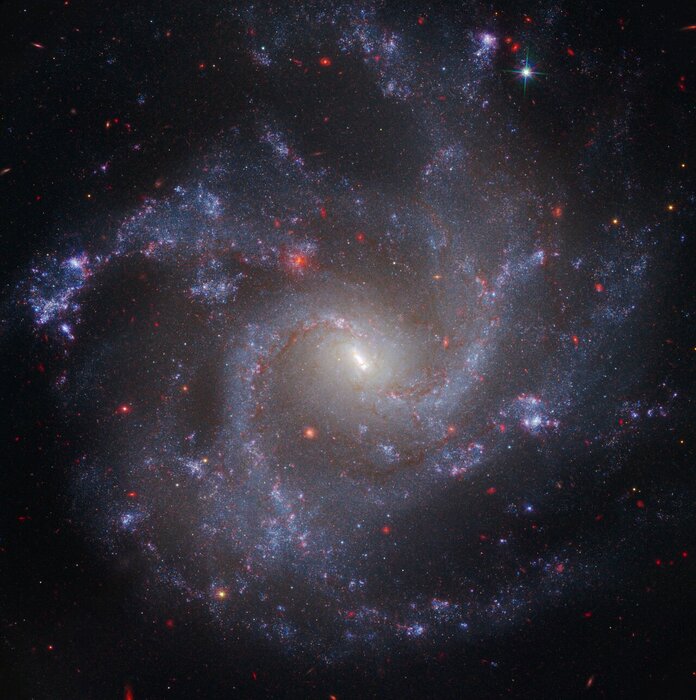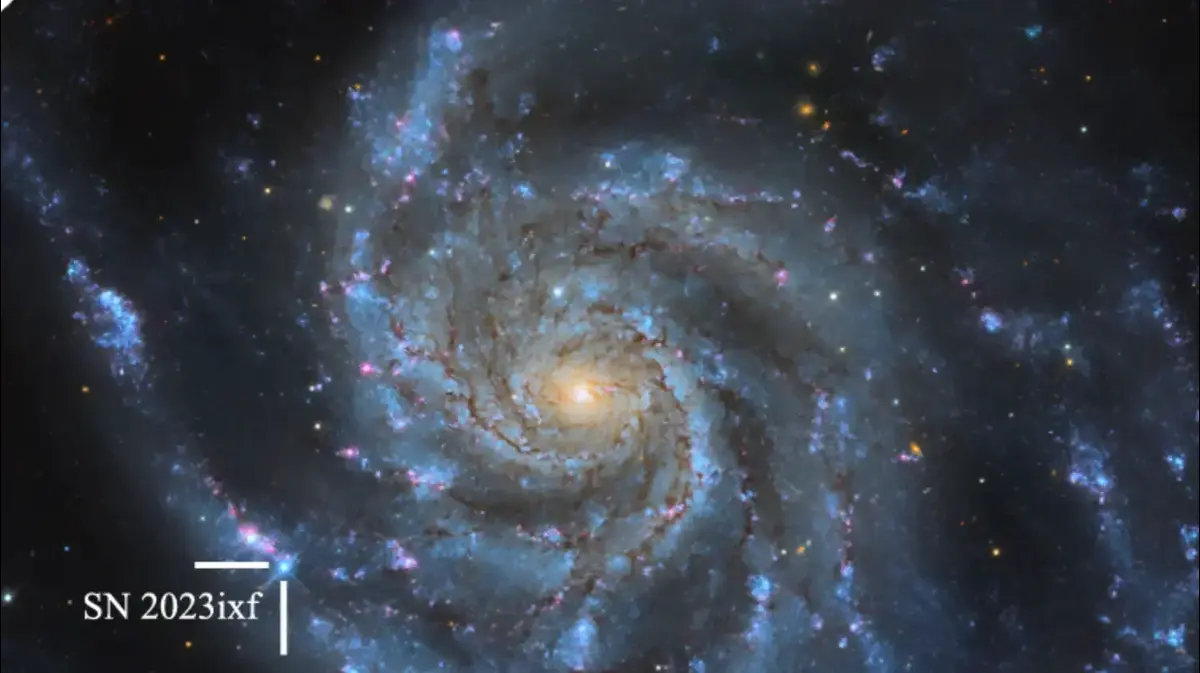Enlarge image
Hubble Space Telescope (archive image)
Photo: NASA
The computer stopped working on a Sunday, around 10 p.m. Central European Summer Time. Even the all-purpose weapon of all IT experts, restarting the computer, could not solve the problem: Since June 13, almost exactly a month, the American-European space telescope "Hubble" has been worrying astronomers and space technicians. Since then, the control unit for the scientific instruments can no longer be addressed from the main computer of the observatory.
That means: The device, which is more than 30 years old and which has advanced research with its hundreds of thousands of sky recordings like no other space observatory, is currently unable to collect any data. At an altitude of almost 550 kilometers, it moves its orbit rather uselessly, while experts on the ground worry about a solution to the problem.
Otherwise, »Hubble« has ideal observation conditions there, beyond the disturbances from the earth's atmosphere, which blurs the starlight on its way to the earth and blocks some wavelengths completely. According to NASA, more than 18,000 scientific publications have been created on the basis of his data over the years. The objectives of the telescope included particularly young galaxies from the early days of the universe, but also objects in our solar system such as planetary moons or asteroids.
"We are looking forward to the developments around Hubble, because we are waiting for the implementation of an observation program," says Nadine Neumayer, group leader at the Max Planck Institute for Astronomy in Heidelberg, the SPIEGEL. That means: Your team has identified observation targets that the telescope should aim at for a certain period of time after it has been fed with the appropriate commands. The group hopes, as the researcher describes it, to obtain "long-awaited data" to measure the star motion in the globular cluster Omega Centauri. “There is currently no other telescope that can provide us with comparable data,” says Neumayer, emphasizing the relevance of scrap iron in space.
But will »Hubble« be able to continue to help with this kind of research? While a possibly defective memory module of the eighties computer was initially indicated as the origin of the problem, it is now clear: The matter is probably more complicated. After the NASA control center at Goddard Space Flight Center in Greenbelt (US state Maryland) gave a command to switch to backup storage, the telescope's malaise persisted. A change to a replacement computer ordered a few days later also initially failed.
In 2008, at that time with the old computer responsible for the scientific experiments, the replacement system had to be activated in order to keep the telescope alive. The unit was later replaced. In a total of five space shuttle missions between 1993 and 2009, "Hubble" was repeatedly repaired and upgraded. Because the space shuttles have long been in the museum, such missions are currently no longer possible. The next time the telescope receives a visit from Earth, it is likely to be a towing robot that pulls it into the earth's atmosphere to burn up at the end of its service life. An adapter for this was installed at the stern of the observatory during the last repair mission.
The computer now affected is not the main computer of the telescope.
This was last replaced by the NASA astronauts in 1999 and currently works without any problems.
But the control unit for the instruments, last changed during the last service mission in 2009, is now causing long-term problems for NASA.
There will be no more repair missions from Earth
By switching several components to their replacement systems at the same time, »Hubble« is supposed to be saved.
Because there are not only backup systems for the two computers.
In the past week, the experts developed a procedure for this and tried it out in a simulation over several days.
Put simply, the aim is not to cause more damage than before with the possible repair maneuver.
"I gave the 'Hubble' team a very clear instruction that safely restarting 'Hubble' and avoiding unintentional damage to the system have top priority, not speed," says Paul Hertz, who works for NASA Astrophysics is responsible.
The space agency is currently saying that the planned changeover of the systems "could" take place this week.
On the part of NASA, "a cautious optimism is spreading," says the Heidelberg astronomer Neumayer.
"We keep our fingers crossed for switching to the backup system."
"James Webb" space telescope before take-off
But is the current "Hubble" Trouble perhaps not such a big problem for science? Finally, after years of delay, the James Webb space telescope, which costs around ten billion dollars and which Americans, Europeans and Canadians have teamed up to build and operate, is due to start in the fall. It is considered to be the most expensive scientific project in robotic space travel. The main mirror of the new telescope, which consists of 18 parts and is only to unfold in space, has a diameter of six and a half meters. For comparison: With »Hubble«, the design of which is based on a number of US spy satellites, the mirror measures only 2.4 meters.
“Nevertheless,› Webb ‹should not be seen as a bigger and better one-on-one replacement for› Hubble ‹,” says Mark McCaughrean, senior scientific advisor to the European Space Agency (ESA) in an interview with SPIEGEL. That is why he also avoids the term "successor". The "Webb" telescope is optimized for the infrared range of electromagnetic radiation, so it is mostly observing at different wavelengths than "Hubble". The oldie telescope mainly takes its pictures in the visible light range and in the near UV and infrared range.
Still, there is of course a connection between the two observatories, says McCaughrean.
"Webb" is also designed to address questions that "Hubble" has raised but "cannot answer itself".
This involves, for example, more distant galaxies, deeper research into star formation areas or the measurement of the atmospheres of cool exoplanets.
“Hubble remains unique in some areas.
So it would be really good to be able to use the unique capabilities of both observatories at the same time. "
But for that, »Hubble« has to wake up again.







